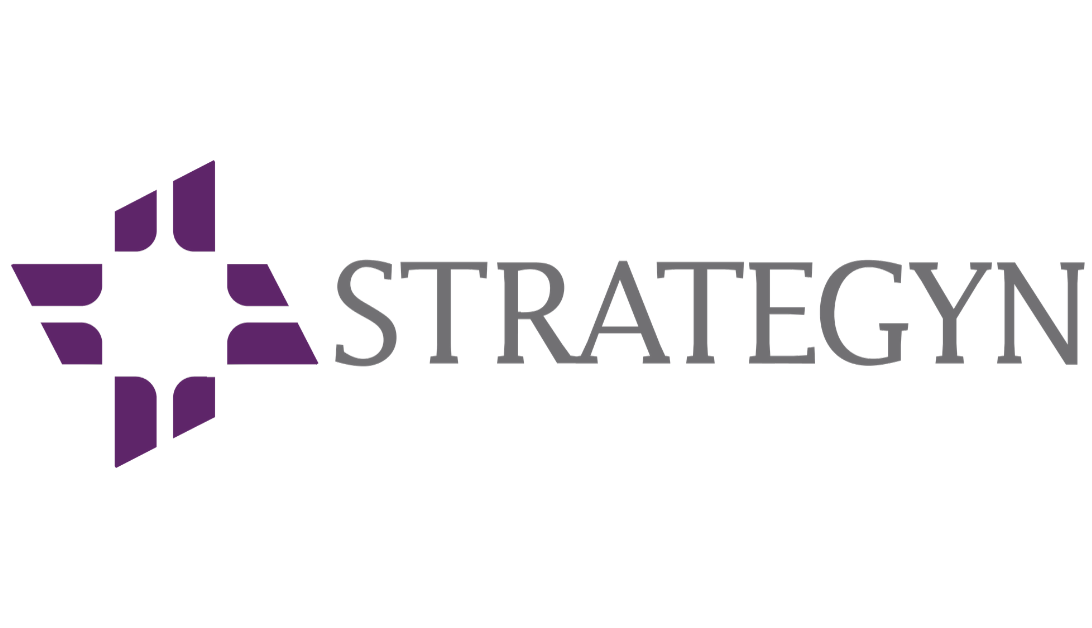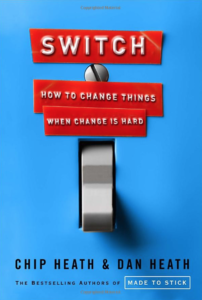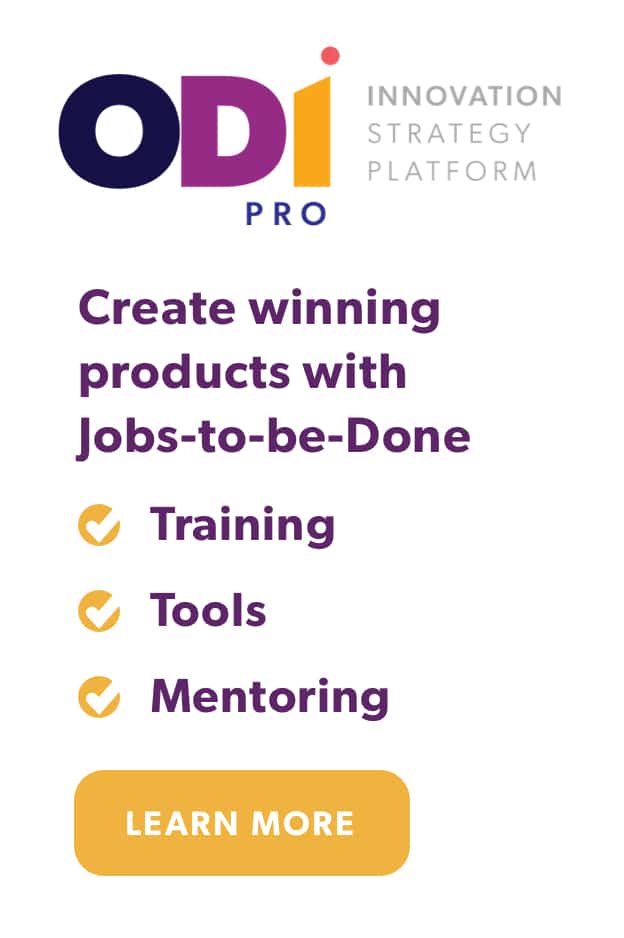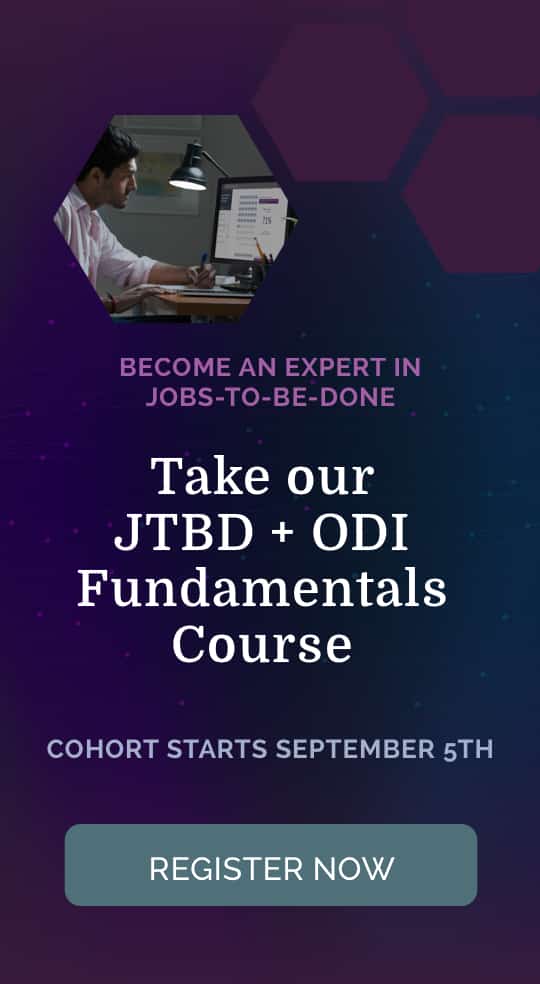What if you could frame an innovation challenge, gather and analyze data, and develop customer value propositions, concepts, and plans in just four weeks? Some suggest that this can’t be done – at least, not at a price that many can afford. But what if it could be?
Conventional consulting wisdom encourages expansive research and multi-month engagements. And yet, this practice may be over-serving some of you in some innovation contexts. Our Innovation Track Record Study found that ODI’s innovation success rate is 5x the industry average. And yet, the verbatims from this study revealed that some of our best clients struggle with an over-abundance of data. Others are underserved, because despite plenty of clear data that points them in the right direction, they struggle to overcome entrenched, old patterns of organizational behavior. And almost universally, they desire to use ODI in more contexts, to speed it up, and reduce costs.
These are important issues, and two key breakthroughs came in my personal search for answers. The first, and most important, was the publishing of the New York Times bestselling book, Switch: How to Change Things When Change is Hard by Chip Heath and Dan Heath.
The Heath brothers say that Innovation is fundamentally about change, and the primary obstacle to change is a conflict that’s built into our brains. The rational mind wants a great beach body; the emotional mind wants that Oreo cookie. The rational mind wants to change something at work; the emotional mind loves the comfort of existing routine. This tension can doom an innovation effort – but if it’s overcome, innovation can come quickly. I’m proud to announce that we’re now partners with the Heath brothers. I am trained, certified, and licensed to use Switch to help you and your teams achieve quick wins and to get more out of ODI.
The second breakthrough came from the emergence of new research methods that are changing the rules of the game. My work in automating the gathering of customer needs has led to a 4x reduction in the time it takes to identify customer needs in many markets. The emergence of do-it-yourself quantitative research tools further reduces the time it takes to get data back from the field while simultaneously reducing cost.
Skeptics may object. It is often said that one month feels too short in duration to reveal actionable insight. As an innovation scholar and consultant I take objections like this seriously. So, I tried it for myself.
My friend and colleague, Zac Lyons, has a grandmother’s whose ability to live independently has suffered greatly in the past few years. Zac’s mother now assists her with most of the activities of daily living. Zac has observed the physical and emotional toll it takes on his mother and caregivers like her. We asked, “Is there something ODI can do to help them?” We didn’t have a lot of money or time to invest, but this was a case in which directional insight would be better than guessing.
As a starting point, we picked the market of “caregivers bathing an elderly family member or spouse.” Applying the new research methods, we were able to gather the needs in one week, create, deploy, and gather data from the field in two weeks, and analyze the results in one week. We discovered the top unmet need was, minimize the risk of falls. The problems that contribute to the risk of falls are many: failing eyesight, muscle weakness, slippery floors, and high tub walls (to name a few). These are tough innovation problems to solve, especially within a budget affordable to seniors living on a fixed income.
And yet, we found a bright spot – those who had installed and used adaptive features such as grab bars and transfer seats were better satisfied. Using Switch, we transformed a hard innovation problem (“How can we address the frailties of age or remodel the bathroom?”) into an easier innovation problem (“How can we get more people to adopt and use relatively inexpensive grab bars and transfer seats?”) It turns out that some elderly bathers resist adopting and using assistive features because it’s an admission of a loss of ability and a sign of old age. Others are willing to adopt these features but struggle to implement them. Both are behavioral innovation challenges – ones well suited to quick-wins through the application of the Switch framework.
Innovation teams used to think that they had to choose between conducting a full, comprehensive ODI study (with its commensurate time and cost), using an outdated innovation method, or worse – guessing (and guessing wrong). Now there’s a new option. Applying these new methods in engagements with Microsoft, Johnson & Johnson, TD Bank, Dun & Bradstreet, and Ingersoll Rand have proven effective.
Don’t get me wrong. This is not a replacement for a comprehensive ODI study. The Quick-Win Innovation Workshop is best used for early-phase learning or to spur new thinking when you need to improve a product or service in an existing market quickly and when the innovation challenge is not purely technical, but also requires behavioral change. Complex product categories such as smartphones, highly technical categories such as medical device, and difficult to contact audiences such as business decision makers still require the breadth and depth of insight provided by a comprehensive ODI study.
How would being able to quickly understand your customer’s needs change the way your team innovates? Our goal is to make ODI accessible in a way that matches appropriate research breadth, depth, and investment with your innovation need. The first step of this is to look through the jobs to be done lens to identify customer needs. If you’re interested in improving your skills at planning and executing change, please leave a comment or send me a note at [email protected].






